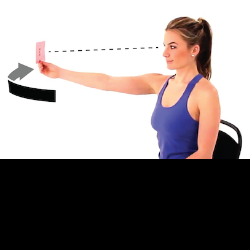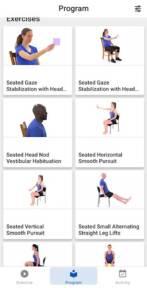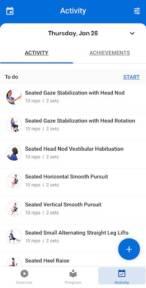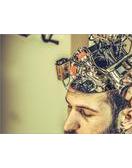
Living Your BEST LIFE with Superficial Siderosis
Our readers living with Superficial siderosis should be aware that living your best life means you need to look beyond simply treating the symptoms. Both your physical and mental health will benefit. Moving towards a healthier diet, exercising to your limits, and managing other coexisting medical issues increases your chance of positively affecting your well-being. Conversely, smoking, an unhealthy diet, and little exercise increase the risk of aggravating your SS symptoms and speeding the disorder’s progression. This is the sixth installment of our BEST LIFE Series.
What is Vestibular Therapy
Vestibular therapy is a type of physical therapy that helps to improve balance and coordination by working on the inner ear portion responsible for sensing movement and changes in head position. This type of therapy can improve conditions such as vertigo, dizziness, and problems with balance. It involves exercises and activities that will help retrain the brain to process information from the inner ear more accurately, such as walking in a straight line or standing on one foot. Vestibular therapy aims to improve a person’s ability to function in daily activities and reduce the risk of falls.
The Vestibulocochlear Nerve
The eighth cranial nerve, also known as the vestibulocochlear nerve, is responsible for transmitting information about hearing and balance from the inner ear to the brain. It comprises two parts: the vestibular nerve and the cochlear nerve.
The vestibular nerve carries information about the position and movement of the head. It helps the body maintain balance and coordination by sending signals to the brain about head position and movement changes, such as when you tilt your head or move in different directions.
The cochlear nerve carries information about sound to the brain. It sends signals to the brain about the frequencies and intensities of sound the ears are hearing. The vestibular and cochlear nerves allow us to hear and maintain our balance.
One characteristic of superficial siderosis is problems with balance and coordination. This is because iron accumulation in the brain can damage the cerebellum, which is responsible for coordinating movement and maintaining balance. This can lead to unsteadiness, clumsiness, and difficulty with coordination and fine motor skills. You may also have vertigo, a sensation of spinning or swaying, which makes standing or walking difficult or dangerous. It’s worth noting that balance problems are only sometimes present in superficial siderosis patients.
When the Signals are Interrupted
Since the vestibular nerve is responsible for sending signals to the brain about the position and movement of the head when the nerve is damaged, the disruption makes it difficult for the brain to understand the body’s position in space. This can cause the brain to perceive that the body or the environment is moving when it is not, which is the sensation of vertigo. Vertigo can cause feelings of nausea, dizziness, spinning, and disorientation.
Vision Problems
Additionally, the vestibular nerve is also responsible for sending signals to the brain about the movement of the eyes. Damage to this nerve can cause dysfunctional eye movements, visual disturbances, and double or blurry vision.
A damaged vestibular nerve can disrupt signals sent to the brain about the position and movement of the head and eyes, causing nausea, vertigo, dizziness, visual disturbances, and difficulty with eye movement.
Equilibrium
The vestibular nerve also sends signals to the brain that control the balance and movement of fluids in the inner ear, which is responsible for maintaining equilibrium and regulating the body’s center of gravity. When the vestibular nerve is damaged, it can disrupt the balance of these fluids, leading to nausea.

Vestibular Therapy Exercises
Vestibular therapy exercises are designed to improve the vestibular system’s function by challenging and retraining the brain to process information from the inner ear. This can help reduce vertigo’s dizziness and spinning sensations and improve balance and coordination. Typical exercises include head and eye movements, balance activities, and gait training. Vestibular therapy is typically performed by a physical therapist who can tailor the exercises to the individual’s specific needs and symptoms.
MedBridge Go
 scan this access code
scan this access codeto download the
MedBridge GO app
and log in
There are vestibular exercises you may practice at home. This exercise program provides three difficulty levels of basic activities related to vertigo and balance issues. To be successful, you must also strengthen your legs. You may access the Superficial Siderosis Research Alliance MedBridge program via your computer or Smart TV browser or download the MedBridge Go app to your phone.
If you can not stand safely, please remember to use caution, wear a GAIT BELT, and always have someone available to act as a SPOTTER to reduce the risk of injury. Before beginning any exercise program, please consult your healthcare provider about when you may advance to a level with greater difficulty.




Home Vestibular Exercise Program
Level One Seated Vestibular, Balance, and Leg Strength Exercises
Estimated Time 14 minutes
Access Code RNKLMVHP
2 x daily – 7 x weekly – 2 sets – 10 reps each set
- Seated Gaze Stabilization with Head Nod
- Seated Gaze Stabilization with Head Rotation
- Seated Head Nod Vestibular Habituation
- Seated Horizontal Smooth Pursuit
- Seated Vertical Smooth Pursuit
- Seated Small Alternating Straight Leg Lifts
- Seated Heel Raise
- Seated Hip Adduction Isometrics with Ball
- Proper Sit-to-Stand Technique
- Standing Hip Abduction
Level Two Vestibular, Balance, and Leg Strength Exercises
Estimated Time 16 minutes
Access Code 34VENAAN
2 x daily – 7 x weekly – 2 sets – 10 reps each set
- Standing on Foam Pad – 1 x daily – 7 x weekly – 1 sets – 5 reps
- Seated Nose to Left Knee Vestibular Habituation
- Seated Nose to Right Knee Vestibular Habituation
- Supine to Long Sitting Vestibular Habituation
- Supine to Left Sidelying Vestibular Habituation
- Right Sidelying to Left Sidelying Vestibular Habituation
- Narrow Stance with Head Nods and Counter Support
- Sit to Stand Without Arm Support
- Standing Hip Abduction with Ankle Weight
- Seated Long Arc Quad with Ankle Weight
Level Three Vestibular, Balance, and Leg Strength Exercises
Estimated Time 11 Minutes
Access Code T2RN8NAE
2 x daily – 7 x weekly – 2 sets – 10 reps each set unless noted
- Standing Gaze Stabilization with Head Rotation
- Standing VOR Cancellation
- Standing with Slow Head Nod
- Standing Horizontal Head Rotation Vestibular Habituation
- Standing with Fast Head Nod
- Sitting Swiss Ball Gaze Stabilization with Head Nod
- Sitting Swiss Ball Gaze Stabilization Head Rotation
- Sit to Stand Without Arm Support – 2 x daily – 7 x weekly – 2 sets – 15 reps
- Wide Stance with Head Rotation on Foam Pad – 2 x daily – 7 x weekly – 2 sets – 5 reps
- Romberg Stance – 1 x daily – 7 x weekly – 2 sets – 5 reps

